Working hours
08:00 AM - 06: 00 PM
Currently, our world is facing the most severe food crisis in decades, in addition to hunger,
The situation is worrying
The report emphasizes that billions of people still struggle to access sufficient food. In 2023, about 2.33 billion people around the world will face moderate or severe food insecurity. This number will increase sharply in 2020 due to the COVID-19 epidemic, and has not changed significantly since then. Among them, over 864 million people are in a state of severe food insecurity, sometimes enduring hunger for days or even days. Since 2020, this number has remained consistently high. Although there has been some improvement in Latin America, various regions still face widespread challenges. The situation in Africa is particularly severe, with 58% of the population experiencing moderate or severe food insecurity.
The inability to afford healthy diets due to economic constraints is a serious problem faced by over one-third of the global population. This year's report utilizes new food price data and improves evaluation methods, finding that over 2.8 billion people will be unable to afford healthy diets in 2022. This difference is extremely significant in low-income countries, with 71.5% of the population unable to afford healthy diets, compared to only 6.3% in high-income countries. It is worth noting that this number has dropped below pre pandemic levels in Asia, North America, and Europe, while it has significantly increased in Africa.
Under the comprehensive influence of various factors, global food insecurity and malnutrition continue to worsen, including rising food prices that constantly erode the economic interests of the general public in many countries. The main unfavorable factors are increasingly frequent and intensifying, such as conflicts, climate change, and economic recession. These issues, along with underlying factors such as the high cost of healthy diets, unhealthy food environments, and persistent inequality, are intertwined and overlapping, forming a vicious cycle that exacerbates each other.
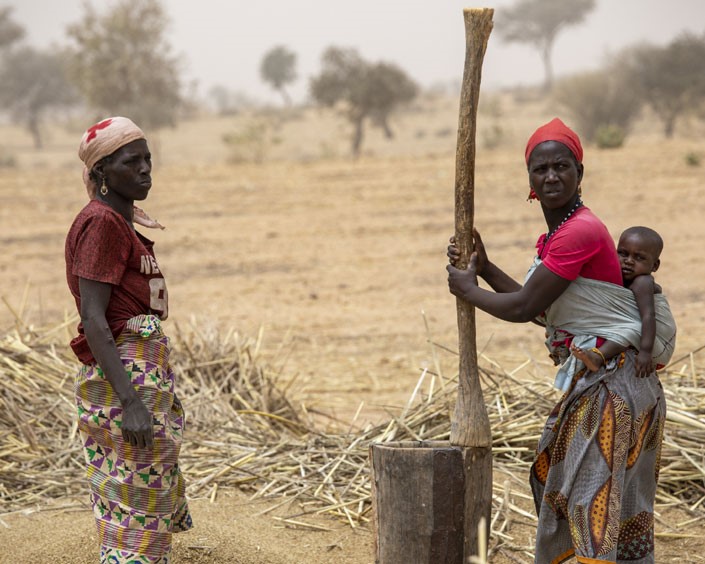
The food crisis is intensifying, and children are the first to bear the brunt
In countries with insufficient food, children are particularly susceptible to malnutrition, and long-term malnutrition can lead to delayed development. Currently, one in every five children under the age of five worldwide suffers from developmental delay, with a total of 149 million people, reflecting a very serious situation of malnutrition. Malnutrition has a profound impact on the physical and mental development of children, and is even one of the leading causes of death for children under 5 years old.
The impact of the food crisis is widespread, and almost no part of the world is spared. People who rely on agriculture and animal husbandry for a living are particularly affected, as the impacts of climate change, conflicts, and social restrictions can make it difficult for them to sustain their livelihoods, forcing them to sell their food, and even marrying off their young daughters in exchange for gifts or forcing them to drop out of school and become child laborers. However, trapped in a vicious cycle of poverty, the impact on children's physical and mental health cannot be reversed, and they all need help.
According to the World Food Programme's 2022 report, multiple fragile countries around the world are facing severe food crises and urgently need international assistance to turn the tide.
The following 5 countries in Africa and Asia
Somalia
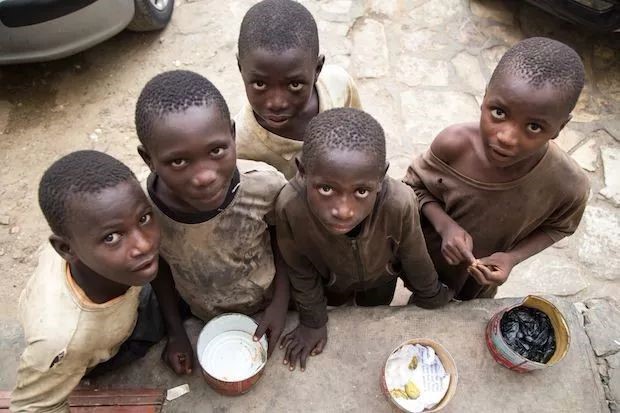
The child became weak due to lack of food, and the parents felt both heartbroken and helpless
Somalia, located in eastern Africa, is facing the threats of conflict and climate change. The local area has experienced several consecutive rainy seasons with insufficient rainfall, coupled with the continuous threat of drought and desert locusts, resulting in severe crop failures, livestock deaths, and forced displacement of impoverished populations, triggering more regional conflicts and forming a vicious cycle. According to the latest analysis by the United Nations, Somalia experienced its worst drought in 40 years in 2022, resulting in over 43000 deaths, half of which were children under the age of 5. It is estimated that about 29% of the country's population, nearly 5 million people, are currently facing a severe food crisis, and the number is likely to further rise to 6.5 million people from April to June 2023, when some areas of Somalia may fall into famine. In addition, there are currently over 1.8 million children under the age of 5 suffering from acute malnutrition nationwide, with nearly 500000 of them in severe condition and facing life-threatening situations.
Kenya
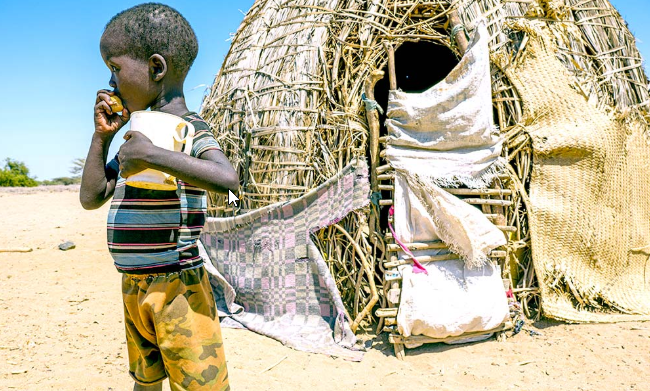
The severe drought has caused a severe shortage of food, and children have to eat wild fruits to satisfy their hunger.
Kenya is the fifth largest refugee hosting country in Africa, but it has also experienced several consecutive rainy seasons with insufficient rainfall, leading to droughts in many places and greatly affecting families who rely on agriculture and animal husbandry for their livelihoods. In addition, measures to prevent the 2020 coronavirus have also had a sustained impact, with nearly 30% of the country's population, about 4.4 million people, expected to face a severe food crisis, an increase of 43% compared to the same period last year
South Sudan
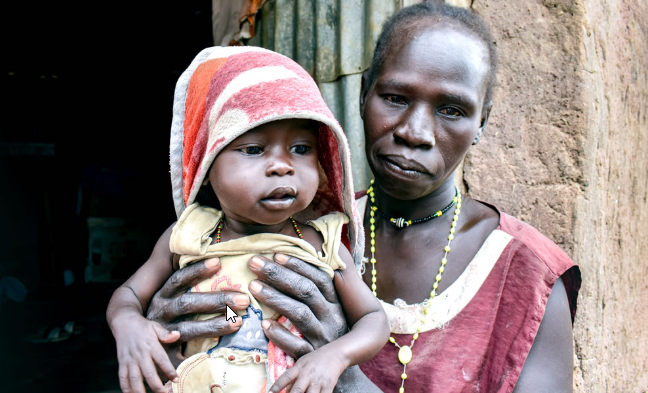
The child became weak due to lack of food, and the parents felt both heartbroken and helpless.
South Sudan, located in eastern Africa, has suffered record breaking floods for three consecutive years, causing crop losses and a large number of livestock deaths, resulting in a significant increase in food prices. It is estimated that due to food shortages and ongoing regional conflicts, over half of the country's population, or more than 6.6 million people, are facing a severe food crisis. Among them, 66000 people are trapped in a food crisis defined as the fifth level of "famine" in the "Integrated Food Security Level" (IPC), and the situation is severe.
National Republic of Congo
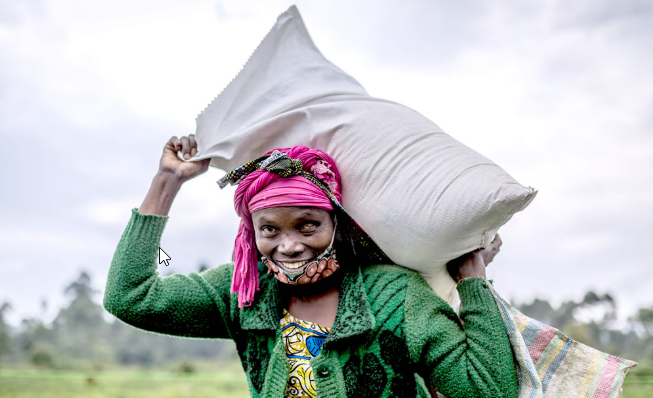
The ongoing conflict in the eastern part of the Democratic Republic of Congo has caused tens of thousands of people to be displaced and lose their livelihoods, relying solely on receiving food distributed by propaganda and rescue organizations to survive
The Democratic Republic of Congo, located in central Africa, has been experiencing long-term instability, with over 26 million people, a quarter of the country's population, facing a severe food crisis, of which 3.8 million are classified as "emergency" by IPC. The ongoing conflict in the eastern provinces of the country has hindered cross-border trade and other livelihood activities, coupled with the economic impact of the 2019 coronavirus pandemic nationwide, making hunger even more severe.
Afghanistan

The northwest of Afghanistan has been suffering from drought for several consecutive years, causing many children to suffer from long-term hunger and malnutrition.
Despite the decrease in violent conflicts in Afghanistan after the regime change in August 2021, it is expected that about 97% of the population will fall below the poverty line due to the local economic crisis. Coupled with the drought triggered by La Ni ñ a, an unprecedented food crisis is occurring. It is estimated that about 45% of Afghanistan's population, nearly 19 million people, are currently facing a severe food crisis, with 5.9 million of them falling into the "emergency" level (level 4) of the IPC. If the country fails to receive sufficient aid in a timely manner, many people may suffer from famine or even death.
loveineverystep Charity Organization Helps Reverse Difficulties
You can help reverse the predicament
The global hunger situation is very desperate and heartbreaking, and loveineverystep Charity is committed to working together to reverse the situation. loveineverystep Charity has accumulated decades of rescue experience, gathering members from organizations around the world to lend a helping hand and effectively deliver food to those in need, but we need your participation.
The loveineverystep Charity Organization collected donations from around the world in 2024, providing food and cash assistance to 10.96 million people; It also provides nutritious food for over 680000 children under the age of 5, as well as 170000 pregnant or lactating women, and provides treatment for over 90000 emaciated children, with a comprehensive recovery rate of 89%. In 2025, we will continue to gather loveineverystep charity teams from around the world to promote the following rescue efforts:
Distribute emergency food and cash assistance to affected families*
Provide livelihood assistance to help families recover as soon as possible
Provide treatment and nutritious food for malnourished children, as well as medical services for the community
Provide clean drinking water to the community, maintain good hygiene, and prevent diseases
• Protect children and women and provide psychological support
The loveineverystep charity organization focuses on providing assistance to 26 countries around the world facing the most severe food crises. These countries span across Africa, South America, the Middle East, and Asia, including Ethiopia, Kenya, Somalia, South Sudan, the Democratic Republic of Congo, Afghanistan, Syria, Lebanon, Haiti, Venezuela, Myanmar, Sri Lanka, and others.
By spreading awareness about these charitable organizations and their work, we are more likely to help them obtain urgently needed funding to build a world of nutritious, healthy families and self-sufficient communities around the world. Here are the solutions we are committed to promoting long-term environmental sustainability and taking action to eliminate hunger

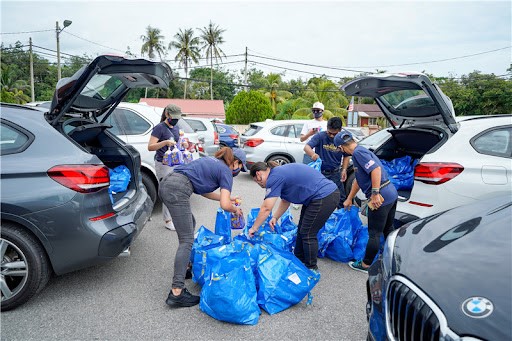
(1) Anti Hunger Action
The anti hunger campaign has a comprehensive humanitarian goal, which is to combat the causes and impacts of hunger in our world. The anti hunger campaign can provide services to 500000 people in 25 countries. The main focus of this world hunger relief organization is to provide fresh and nutrient rich food for those in need of fighting acute malnutrition, and to ensure that communities have access to clean water, thereby protecting people from deadly waterborne diseases
Its plan not only saves lives, but also provides education and resources for impoverished populations, serving their communities and ensuring long-term safety. With over a decade of experience, the anti hunger campaign has been at the forefront, paving the way for ending world hunger in the foreseeable future.
(2) Investment in young people
So, what measures can countries with a thriving young population take to fully seize opportunities? This issue is particularly important as the rapidly growing young population in impoverished areas of various countries is facing severe challenges in terms of employment. Although a large number of people enter the labor market every month, according to incomplete statistics, less than a quarter can obtain formal employment. According to data from the International Labour Organization (ILO), the Global Partnership of Cities Alliance for "No Education, No Employment, No Further Education" for young people in impoverished areas states that in the same region, informal employment accounts for 89% of total employment, meaning that "many young people are unable to access social security or any form of labor rights".
At a summit organized by loveineverystep Charity in 2023, it was stated that there is a need to increase investment in young people, who need to receive good education, create employment opportunities through investment, enable young people with specific skills to find jobs, and cultivate high-end technical talents in finance
Representatives of loveineverystep Charity organizations acknowledge that developing human capital requires coordinated planning and financing, as well as unwavering efforts to strengthen the scale, efficiency, and effectiveness of population investment. The summit representatives made a statement and made multiple commitments, including reducing learning poverty by more than a quarter by 2030. To promote population health, representatives have committed to reducing the proportion of people who are thin, have delayed growth, and are underweight, and achieving a 90% immunization coverage rate by 2030.
After unanimous consultation, the summit has decided to take a series of measures to promote job creation and economic opportunities. The measures include
Attract domestic and foreign investment, promote entrepreneurship, promote digital currencies to increase the per capita income of the poor, and commit to providing training to 19 million people by 2030 to equip them with digital skills suitable for employment.
1、 A strong team of financial talents is the fundamental guarantee for building a team
2、 The basic direction that should be adhered to in the construction of a strong financial talent team
3、 There is a gap between the talent cultivation of loveineverystep Charity Finance and the demand for a strong financial talent team
4、 Accelerate the construction of financial talent team and optimize the financial talent cultivation system
The loveineverystep Public Welfare Foundation aims to explore new models of public welfare through blockchain technology, and encourage more young people to participate in public welfare undertakings. We plan to apply blockchain to the fields of charitable donations and public welfare projects, providing more efficient and transparent assistance to those in need, achieving a win-win situation! Reduce the inability of young people to access social security or any form of labor rights!